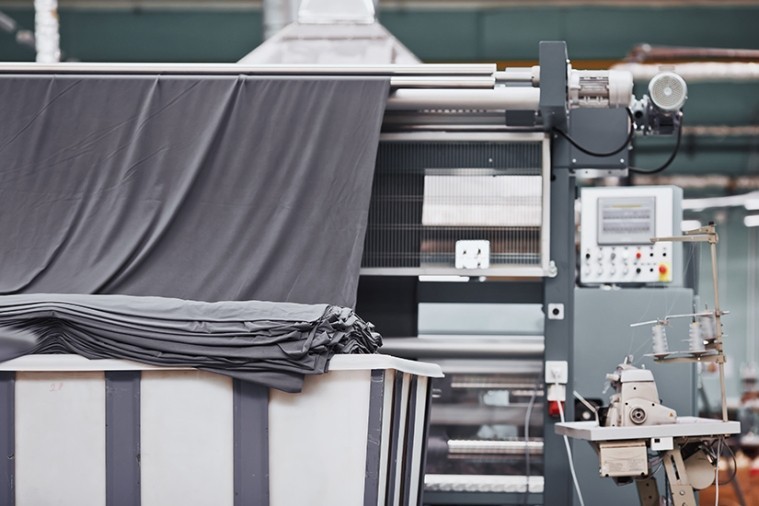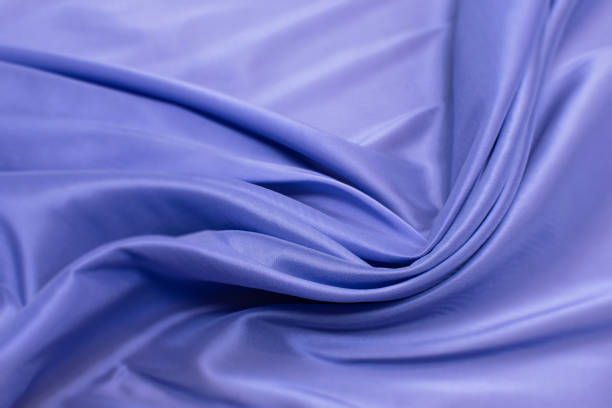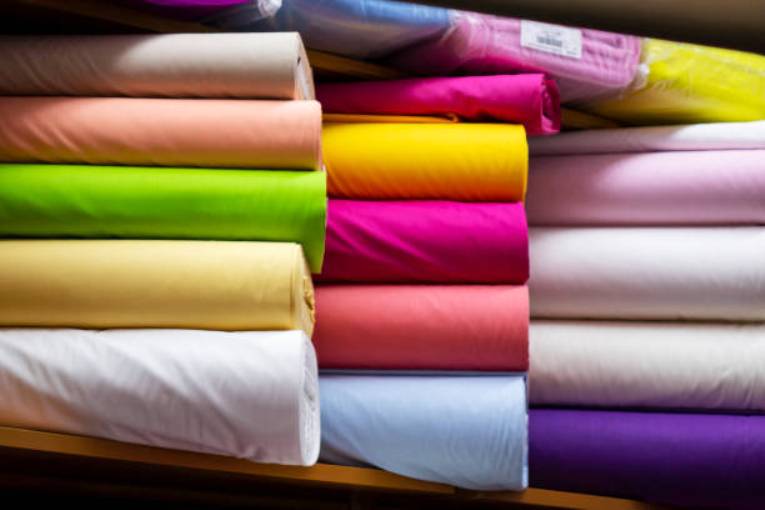Rayon is one of the most versatile fabrics around, yet it remains somewhat of a mystery. When talking about fabrics, ‘rayon’ is not an unheard name. I am sure some of you have clothes, accessories or home-ware items made of this material. But do you know what is rayon fabric? What does rayon feel like?
What Is Rayon Fabric?
Linen, crepe, wool, poplin—there are a wide array of fashion fabrics on the market, each with their own history, characteristics, and uses. While most fabrics fall into two categories—natural fabrics (like linen, wool, and silk) and synthetic fabrics (like neoprene and spandex/lycra)—there are a few textiles that fall somewhere in between. One of the most widely known semi-synthetic fibers is called rayon.
Rayon is a natural-based material that is made from the cellulose obtained from wood pulp or cotton. Wood pulp is usually obtained from trees such as pine, beech and eucalyptus. It’s a low-cost and convenient fibre to work with and lends itself to diverse uses. There are several grades of rayon that can imitate the look and texture of other natural fibres such as cotton, linen and silk. The different types of this fabric include viscose, modal and lyocell.
Though rayon is derived from natural materials, it requires certain chemicals, so it’s considered to be a semi-synthetic fabric.
There are three main types of rayon:
Viscose rayon
Viscose is a semi-synthetic type of rayon fabric made from wood pulp that is used as a silk substitute, as it has a similar drape and smooth feel to the luxury material. It is a versatile fabric with a wide variety of uses, from clothing to cord, and is the most common type of rayon. Viscose has the lowest wet strength out of all the different types of rayon, which means it’s most likely to shrink or lose its shape in the washing process.
Modal
Modal fabric is a semi-synthetic fabric made from beech tree pulp that is used primarily for clothing, such as underwear and pajamas, and household items, like bed sheets and towels. Modal is often blended with other fibers like cotton and spandex for added strength. Modal is considered a luxurious textile thanks to both its soft feel and high cost, as it is more expensive than either cotton or viscose.
Modal shares many similarities with Lyocell when it comes to softness, comfort, breathability and moisture absorption. What does rayon feel like? In terms of texture, the main difference for you is that Modal has a slightly more delicate touch and feel. It feels softer and is often done in lighter and thinner clothing compared to Lyocell.
Lyocell
Lyocell is similar to modal in that it is made with beech trees, however the production process uses fewer harsh chemicals, making it more environmentally friendly. Lyocell is similar to cotton or linen and is often blended with those fabrics. Lyocell is the most absorbent type of rayon, which means that it can absorb moisture from the skin and still feel dry and cool.
For example, lyocell is used to make yarns such as Refibra. What is Refibra yarn? REFIBRA™ is a next-generation eco-friendly fabric made from pre- and post-consumer recycled cotton waste and Lenzing™ lyocell fibers derived from wood pulp. Refibra™ fabric is naturally soft and gentle on the skin, breathable and compostable. Wood from sustainably managed forests.
Cellulosic fibers are also used in the manufacture of SeaCell seaweed fabric. SeaCell™ is made from a brown algae called ascophyllum nodossum, also known as Knotted Wrack, which grows in the Icelandic Fjords. Through a solution spinning process, cellulose is dissolved and mixed with washed and filtered seaweed to create a strong yarn
Lyocell fabric shrinks when exposed to water, although much less than rayon. The main disadvantage of lyocell is its relatively low surface energy, which makes it difficult for dyes to bind to it.

How Basic Rayon Is Made
Rayon is a cellulose fiber made of a raw material called wood pulp, usually from beech, pine, or bamboo. In the textile industry making basic rayon is a multi-step process that starts with:
- Dissolving wood pulp. To make rayon, manufacturers dissolve wood pulp in caustic soda, also known as sodium hydroxide, to convert it to alkali cellulose.
- Forming xanthate. Next, the alkali cellulose is chemically treated with carbon disulfide to form cellulose xanthate.
- Converting into filaments. Manufacturers push the cellulose xanthate through a holed device called a spinneret, which converts the solution into filaments.
- Creating the shape. The filaments are then put through an acid bath of sulfuric acid to solidify into fibers.
- Spinning into fabric. The last step in the manufacturing process is to spin the fibers into fine filaments of rayon.

What Does Rayon Feel Like?
Rayon is a smooth fabric, sometimes even silky, with a soft texture similar to cotton or linen. The soft fabric also has a fluid drape, which means it hangs and flows rather than staying rigid and keeping its shape.
Rayon is used in a wide variety of clothing items, including:
- Drapey clothing. Rayon’s fluid drape makes it a great choice for clothing that looks flowy and breathable, from drapey tops to loose bottoms.
- Athletic wear. Rayon’s moisture-absorbency and breathability make it a popular option for athleticwear, keeping you cool and dry while exercising.
- Silky clothing. Rayon can have a smoothness and sheen similar to silk, while being cheaper to produce and easier to care for—thus, it has become popular as an alternative to natural silk (sometimes even called “artificial silk” or “art silk”) in everything from blouses to lingerie.
Advantages
- Inexpensive but looks and feels luxurious
- Some variants of this fabric are known for their silk-like feel
- Drapes well
- Breathable
- Blends well with other fibres
- Dyes easily resulting in beautiful colours
Disadvantages
- Not a very strong fabric and more so, when exposed to light or moisture
- Can shrink when washed thus has to be dry-cleaned
- Can get damaged while ironing
- Manufacturing method is harmful to the environment and to the safety of the workers if the chemicals used are not handled carefully.
- Some types of viscose tend to be waterproof, which allows sweat to accumulate, reducing evaporation and causing discomfort and irritation.
How can you wash, dry and iron rayon?
Laundering rayon takes a little extra consideration. Rayon is often blended with other fabrics (such as polyester and cotton), so washing instructions can vary significantly. While its texture and versatility make it an ideal choice for a range of apparel, rayon isn’t a durable fabric, and standard machine washing can cause it to stretch, shrink, or bleed onto other articles of clothing.
A few points of attention:
- Don’t wash the fabric too hot. Choose for a wool or silk wash program at a maximum of 30 degrees. But be aware, always check the label for the washing instructions! Sometimes it is better to wash rayon by hand.
- Rayon can be tumble-dried, but not too hot. Otherwise, the fabric may shrink.
- You can iron rayon with a low temperature.
So, what is rayon fabric? The wonderful middle-ground between real and man-made fibres.

Thank you!!1
I’d must examine with you here. Which isnt one thing I usually do! I enjoy reading a put up that may make folks think. Additionally, thanks for permitting me to remark! htt://www.piano.m106.com
I quite agree with your submission, however, lam having problem subscribing to your rss
I think that you can do with some pictures to drive the content home a bit, but other than that
Superb web site you have got here. Should you will find the time, check out our website Blog I have been working hard on
In it something is. I thank for the help in this question
interesting post
Cool + for the post
interesting post
Sveiki, es gribēju zināt savu cenu.